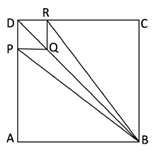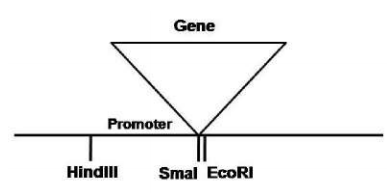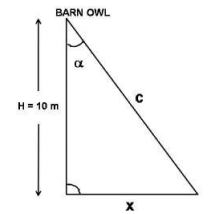 Multiple Choice Questions
Multiple Choice QuestionsThe average staff salary of a company is Rs. 8000/-. A new guard and a new manager are recruited with salaries of Rs. 5000/- and Rs. 20000/-, respectively. What is the current staff strength if the new average salary is Rs. 4000/- more than that of the guard?No
9
10
11
A 100 m long fence is to be made by fixing a wire mesh on steel poles. Each pole has a 1 m vertical portion and a 1m portion tilted at 45° to the vertical. What will be the area of wire mesh required?
200m2
241.4m2
400m2
170.7m2
DRQP is a small square of side a in the corner of a big square ABCD of side A.

What is the ratio of the area of the quadrilateral PBRQ to that of the square ABCD, given A/a = 3?
2/9
1/6
1/3
2/7
From the following statements:
A. Coloured images can be obtained by transmission electron microscopy by fluorescent labelling of the specimen.
B. Scanning electron microscopy requires sectioning of the sample.
C. Confocal microscopy uses optical methods to obtain images from a specific focal plane and excludes light from other planes.
D. Differential-interference microscopy relies on interference between polarized light due to differences in the refractive index of the object and surrounding medium.
E. visualization in epifluorescence microscopy requires staining by heavy metal atoms.
Choose the combination with two correct and one incorrect statements.
B, C, E
A, B, E
A, C, D
B, D, E
Diagnosis of influenza virus infections can be done using some of the following techniques:
A. Western blot and Southern blot
B. Northern blot and western blot
C. ELISA and RT-PCR
D. PCR and electron microscopy
Choose the combination of techniques that correctly lists the detection methods.
A and B only
C and D only
B and C onl
A and D only
If a metabolically active cell is challenged with 55Fe radioisotope label, which of the following proteins CANNOT be detected by autoradiography?
Aconitase and lioic acid synthase
Cytochrome C and DNA primase
Calmodulin and Calcineurin
Myoglobin and Homoaconitase
To achieve the best resolution using a fluorescence microscope, what combination of wavelength of emitted light (λ), refractive index and the angle (2θ) by which light enters into the microscope would be the best choice for the user:
λ = 405; refractive index = 1.33; 2θ = 90°
λ = 420; refractive index = 1.51; 2θ = 180°
λ = 520; refractive index = 1.51; 2θ = 90°
λ = 405; refractive index = 1.51; 2θ = 180°
A researcher attempted to clone a 630 bp coding sequence of a gene downstream to a bacterial promoter (500bp in length) for overexpression and purification of the encoded protein. The gene sequence was isolated as a SmaI fragment (Recognition sequence: CCC ↓ GGG; arrow indicates the site of restriction) and cloned at a SmaI site located downstream to the promoter. The gene sequence contained a single site for EcoRI located 30bp downstream to the start codon. A schematic representation of the plasmid along with location(s) of some restriction enzyme sites of the vector is given below.

The researcher screened the obtained colonies by a double digestion using HindIII and EcoRI. Which one of the following restriction digestion patterns would represent the restriction profile of the desired clone that could be used for overexpression?
∼530bp + ∼600bp + vector backbone
∼1100bp + ∼30bp + vector backbone
∼500bp + vector backbone
∼1130bp + vector backbone
Match the technique with its appropriate application/ use from the list of options given below:
| Technique | Application |
| A. ChIP | i. Analysis of methylation sites |
| B. Bisulphite sequencing | ii. Identification of 5' and/or 3' ends of transcripts. |
| C. ELISA | iii. Identification of binding sites of transcription factors. |
| D. RLM-RACE | iv. Quantification of transgene expression |
A - iii; B - i; C - iv; D - ii
A - ii; B - iii; C - i; D- iv
A - iv; B - i; C - iii; D - ii
A - iii; B - iv; C - ii; D - i
A barn owl sits on its perch 10 m above ground. It hears a mouse underneath on the ground at an angle α as shown in the figure below.

The error range with which it can locate the mouse on the ground is given by
tanα = X/H
cosα = X/H
sinα = X/H
cosα= X/C
